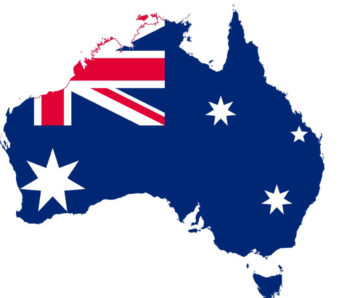
(Credit: Marcin n®/Wikipedia)
The Sydney Morning Herald published a story about the World War I battle at Villers-Bretonneux, the headline of which referred to as “the little-known battle led by Australians which turned the tide of World War I.”
The problem is, the article had a series of errors. Now, the Sydney Morning Herald has published a 319-word correction and apology detailing those mistakes. The article appears to have been unpublished as it now goes to an error page. iMediaEthics has written to the reporter, Jonathan King, for more information.
A spokesperson for Fairfax Media, which is the parent company of the Sydney Morning Herald, said: “The errors were made by the author. He does not dispute they were his errors. The apology ran in print and online, and piece has been retracted from the website.”
Two errors involved Major General John Monash, who the Sydney Morning Herald claimed gave “an impassioned pep talk” before the battle. But, Monash wasn’t involved in the battle and didn’t give a speech.
Other errors included wrongly claiming:
- Australian generals Harold “Pompey” Elliott and William Glasgow led their troops (they were “at headquarters coordinating the assault” not with their troops, according to the correction)
- Elliott’s men encountered “German fighting in dark woods” (they didn’t, according to the correction)
- Lt. Clifford Sadlier was part of Elliott’s 15th Brigade (he was with the 13th Brigade, the correction said)
- Sadlier earned the Victoria Cross for actions on the “dim light of early dawn” on April 25 (he received the Victoria Cross for his actions before midnight April 24, according to the correction)
- General Monash “led Australian troops to victory in the village of Le Hamel” (he did this in July, not two months earlier, as the reporter wrote, according to the correction)
The full correction and apology is below:
A story by Jonathan King last weekend entitled, “The little-known battle led by Australians which turned the tide of World War I” contained a number of factual errors.
The article, about the decisive events at the town of Villers-Bretonneux on Anzac Day in 1918, told of an Australian counter-attack to re-take a town which had been seized the previous day by German troops.
The story reported that then Major-General John Monash “delivered an impassioned pep talk” before the counter-attack in a “powerful use of Anzac Day” to motivate his men, and that his coaching had been successful.
In reality, General Monash played no part in the battle for Villers-Bretonneux, neither in the planning nor the execution. He gave no speech to troops before the attack.
The article also reported that two other Australian generals, Harold “Pompey” Elliott and William Glasgow, led their troops past the town to the north and south respectively. In fact, neither of those generals were with their troops; they remained at headquarters coordinating the assault.
The article said General Elliott’s men ran into enemy machine-gun nests hiding in dark woods. But Elliott’s men did not encounter German fighting in dark woods.
There were also errors relating to the actions of Lieutenant Clifford Sadlier, who won a Victoria Cross for his actions on that day.
The story said Sadlier was with Elliott’s 15th Brigade, attacking from the north of the town. In fact, Sadlier was in the 13th Brigade, led by Glasgow, which attacked from the south. The story said the events that led to his award occurred in the “dim light of early dawn” on Anzac Day. They occurred before midnight on April 24.
General Monash led Australian troops to victory in the village of Le Hamel, six kilometres away from Villers Bretonneux, on July 4, more than two months after the events described in the story.
We apologise to our readers for these errors.






